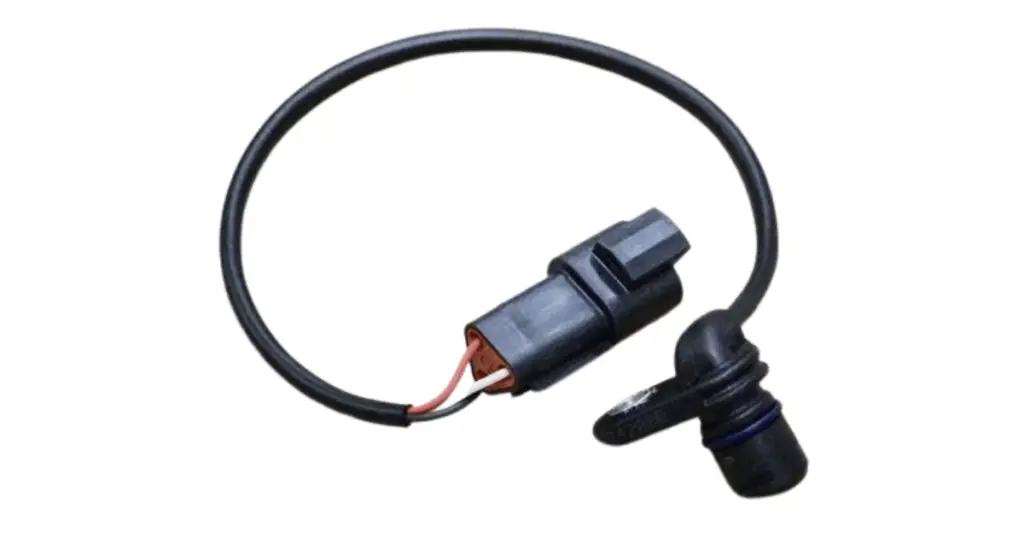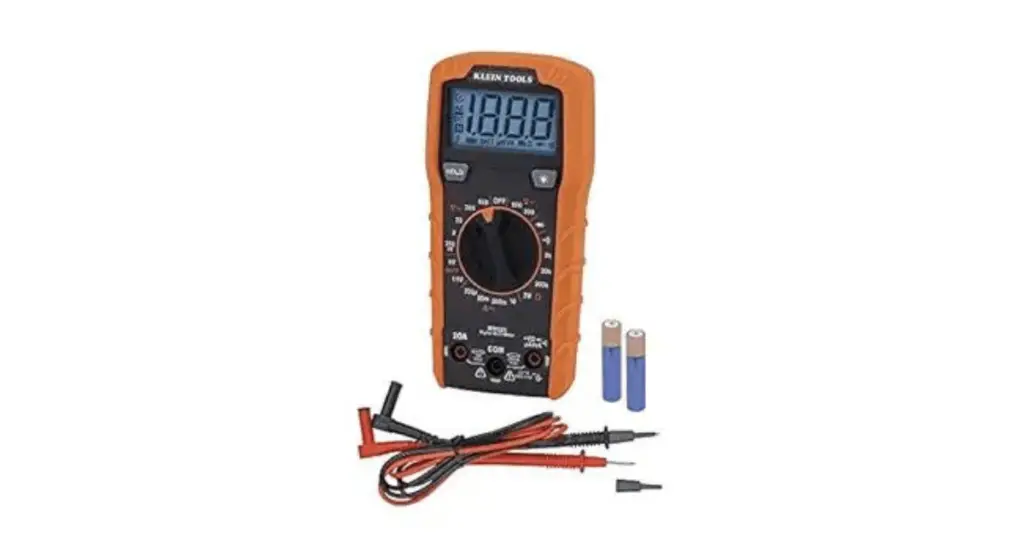Harley Davidson motorcycles have a reputation for power and performance. A key component in these bikes is the speed sensor, assisting in providing an accurate speed reading and facilitating the functionality of various systems. In this article, we shall delve into the symptoms of a faulty Harley speed sensor, discuss the diagnostic process, replacement procedures, preventive maintenance tips, and when you need to seek professional help. So, are you ready to dive into these Harley speed sensor symptoms? Let’s get to it!
What Is A Speed Sensor On A Harley Davidson?

A speed sensor, alternatively known as a vehicle speed sensor (VSS), is a critical part of a motorcycle’s electronic system. It monitors the rotational speed of the wheels and delivers this information to the motorcycle’s onboard computer or control module. The vehicle speed sensor offers crucial data for different systems, such as the speedometer, cruise control, anti-lock braking system (ABS), and traction control.
Related: Harley Davidson Crank Position Sensor Symptoms Get Revealed
What Are The Different Types of Speed Sensors?
Harley-Davidson motorcycles incorporate various types of speed sensors, including:
- Hall Effect Sensors: These sensors use the Hall Effect to detect changes in magnetic fields, generating an electrical signal based on wheel speed. They are frequently used in contemporary Harley models.
- Inductive Sensors: Inductive speed sensors employ electromagnetic induction to detect wheel speed. They consist of a coil and a magnetic rotor, and as the wheel rotates, it initiates a change in the magnetic field, resulting in an electrical signal.
- Photoelectric Sensors: These sensors utilize a light source and a photodetector to determine the speed of the rotating wheel. The wheel’s interruption or reflection of the light beam triggers the sensor to generate a signal.
What Are The Most Common Harley Speed Sensor Symptoms?
Recognizing the symptoms of a faulty Harley speed sensor is essential to prevent potential problems and ensure the motorcycle’s optimal performance. Here are some common symptoms to be aware of:
Malfunctioning Speedometer (Or Not Working At All)
An inaccurate speedometer reading is one of the primary indicators of a faulty speed sensor. The speedometer may display speeds significantly higher or lower than the actual speed of the motorcycle.
Intermittent Cruise Control Operation
A malfunctioning sensor can disrupt the proper functioning of the motorcycle’s cruise control system. The cruise control may fail to engage or maintain a steady speed, leading to inconsistent riding experiences.
Related: Red Light on Harley Speedometer: Causes and Solutions
ABS, Traction Control, or RDRS Problems
Speed sensors are integral components of the ABS, traction control, and RDRS (Reflex™ Defensive Rider Systems). If the sensor malfunctions, it can cause these safety features to malfunction as well. You may experience difficulty in braking or notice strange behavior in the traction control system.
Misfiring, Stalling, or Hesitation When Accelerating
A faulty speed sensor can sometimes lead to engine misfires or stalling. The motorcycle’s engine relies on accurate speed data to adjust various parameters for optimal performance. If the sensor provides incorrect information, it can disrupt the engine’s operation, resulting in misfires or stalling.
Problems Shifting Gears (and Other Transmission Issues)
A malfunctioning sensor can affect the motorcycle’s transmission system. You may notice erratic shifting, difficulty engaging gears, or even complete transmission failure.
Related: Harley Davidson Clutch Replacement Cost: Complete Overview
How To Diagnose and Identify A Faulty Speed Sensor

To diagnose speed sensor issues, a systematic approach is essential. Here’s a step-by-step process to identify and troubleshoot problems related to the speed sensor:
Begin with a visual inspection: Check the sensor and its wiring for any visible damage or loose connections. Look for signs of corrosion or moisture ingress, which can impact the sensor’s functionality.
Utilize diagnostic tools: Use a digital multimeter or an onboard diagnostic (OBD) scanner to retrieve error codes and obtain real-time data from the motorcycle’s electronic systems. These tools can provide valuable insights into the sensor’s performance.
Test the sensor signal: A multimeter can be used to test the sensor’s signal while manually rotating the wheel. Compare the obtained readings with the specifications provided by the motorcycle manufacturer to determine if the sensor is functioning within the expected range.
Check wiring and connections: Inspect the wiring harness connected to the speed sensor for any signs of wear, damage, or loose connections. Repair or replace any faulty wiring or connectors as necessary.
Can You Replace A Speed Sensor By Yourself?
If the sensor is found to be faulty during the diagnostic process, it is crucial to replace it to restore the motorcycle’s optimal performance. Here is a step-by-step guide to replacing a faulty speed sensor:
Step by Step Guide for Speed Sensor Replacement
Gather The Necessary Tools and Parts
Before starting the replacement process, gather the required tools and a compatible replacement speed sensor. Consult the motorcycle’s service manual or manufacturer guidelines for specific recommendations.
Locate The Speed Sensor
Refer to the motorcycle’s service manual to locate the speed sensor. It is typically positioned near the wheel hub or transmission area.
Remove The Old Sensor
Carefully disconnect the wiring harness connected to the speed sensor. Use appropriate tools to remove the sensor from its mounting location. Take note of the sensor’s orientation for the installation of the new sensor.
Install The New Sensor
Install the new speed sensor in the same position as the old sensor. Ensure a secure fit and reconnect the wiring harness, ensuring that all connections are correct.
Test The New Sensor
Once the new sensor is installed, perform a test ride to verify its functionality. Monitor the speedometer readings and check for any anomalies. If the new sensor is working correctly, you have successfully replaced the faulty speed sensor.
Are There Maintenance Practices To Prolong The Life of Your Speed Sensor?
To maintain the longevity and optimal performance of your Harley speed sensor, consider the following preventive maintenance tips:
Regular inspection and cleaning: Periodically inspect the speed sensor for any signs of damage or corrosion. Clean the sensor and its surrounding area using a non-corrosive cleaner and a soft brush to remove dirt, debris, or any built-up grime.
Avoid excessive moisture exposure: Protect the sensor and its wiring harness from excessive moisture exposure. Consider using protective covers or shields to prevent water ingress. Also, avoid high-pressure water cleaning the motorcycle to prevent water from seeping into sensitive components.
Handle electrical components with care: Exercise caution when working with electrical components, including speed sensors. Avoid using excessive force when disconnecting or reconnecting wiring harnesses to prevent damage. Handle the sensors with care to avoid impact or mishandling that could potentially lead to sensor failure.
By the way, here are my technical resources for your own maintenance practices:
> Torque Specs for Harley Davidson: Ultimate Guide (PDF)
> Complete Harley Davidson Tire Size Chart (PDF)
When Should You See A Professional?
While some sensor issues can be resolved following the outlined steps, there are situations where professional assistance is recommended:
Complex diagnostic issues: If the diagnostic process becomes complex or beyond your technical expertise, it is advisable to consult a qualified mechanic or a Harley-Davidson authorized service center. They have the necessary equipment and expertise to diagnose and address complex speed sensor problems.
Lack of experience or technical knowledge: If you are unsure about your ability to perform the diagnostic or replacement process correctly, it is better to seek professional help to avoid further damage or complications.
Warranty or insurance coverage: If your motorcycle is under warranty or covered by insurance, it is recommended to consult an authorized service center to ensure compliance with warranty terms or insurance requirements.
Wrapping Up (Recap of Main Points)
The vehicle speed sensor is a crucial component of your Harley-Davidson motorcycle, contributing to accurate speedometer readings and the proper functioning of various systems such as cruise control, ABS, and traction control. By understanding the symptoms of a faulty speed sensor, following the diagnostic process, performing timely replacements, and adopting preventive maintenance measures, you can ensure optimal performance and safety while enjoying your Harley riding experience.
As an expert mechanic and the proud owner of a reputable car repair shop, I am not just about fixing motorcycles—I also have a passion for storytelling. This article combines my automotive expertise with captivating narratives, sharing my experiences, insights, and adventures through the written word. From thrilling tales of automotive triumphs to practical tips and advice for motorcycle enthusiasts, I invite you to explore the fascinating world of motorcycles through my unique perspective. Get ready for a blend of mechanical mastery and storytelling magic. Together, let’s embark on an exciting literary ride!
Read more:
> ThunderMax Tuner Reviews: A Complete, In-Depth Analysis
> The Best Harley Davidson Tuner Is Revealed (+5 Alternatives)
> The Best Tuner For Milwaukee 8 114 Engines (+Alternatives)
> Best Tuner for Harley 103 Gets Revealed (By An Expert)
> The Best Oil For Harley Davidson Motorcycles Gets Revealed
> Best Oil For Harley Transmission And Primary Gets Revealed
> The Best Oil for M8 Harley Engines Gets Revealed (Complete)
> Best Harley Seat for Tall Riders (A Comprehensive Guide)
> Best Spark Plugs For Harley Davidson (Im An Actual Mechanic)
> The Best Stage 2 Air Cleaner for Harley Davidson Motorcycles
> Best Battery For Harley Davidson Motorcycles: Mechanic Tells
> ThunderMax vs Power Vision Tuner Shootout
> The Best Fuel Stabilizer for Harley Motorcycles Revealed
> Best Harley Touring Tires: Top Picks for Long-Distance Rides
> ThunderMax vs Power Commander: Who Packs The Punch +Value?